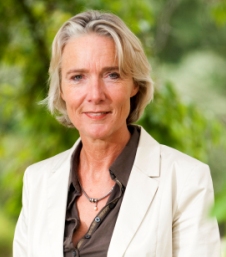
Kidney Exchange Programs in Europe (COST-ENCKEP); What Can We Learn from Each Other?
Bernadette J.J.M. Haase-Kromwijk1, Aline Hemke1, Peter Biró2, Lisa Burnapp3, Rachel Johnson3, Joris vd Klundert4, David Manlove5.
1Dutch Transplant Foundation, Leiden, Netherlands; 2Institute of Economics, Hungarian Academy of Sciences, Budapest, Hungary; 3NHS Blood and Transplant, Hertfordshire , United Kingdom; 4Health Services Management & Organisation, Erasmus University, Rotterdam, Netherlands; 5School of Computing Science, University of Glasgow, Glasgow, United Kingdom
COST-ENCKEP.
Introduction: This study was performed by the European Network for Collaboration on Kidney Exchange Programs (ENCKEP)1, that started in 2016 and which brings together policy makers, clinicians and optimization experts in Europe to stimulate a European dialogue on this topic. The COST ENCKEP platform is supported by the EU, and is open for participation to all EU countries and beyond. In this first part of the project participating countries exchanged current practices with respect to national KEPs; similarities and differences between current KEPs were identified as well as risks and opportunities.
Methods: The information on current kidney exchange practices was collected by using a pre structured questionnaire, which was sent to all 23 European countries participating in ENCKEP. The results of these questionnaires were discussed in two workshops in January and March 2017, with the representatives of the participating countries. In September 2017 a workshop was dedicated to exchange information on the allocation algorithms used. Descriptions on all operational KEPS are compared with regard to e.g. modeling (constraints and optimization criteria) as well as solution techniques.
Results: Of the 23 participating countries 14 confirmed to have a kidney exchange program. Further classification according the level of development resulted in 3 large, advanced programs, 7 smaller operating programs, 4 programs in preparation and 3 countries which had no program yet, but intended to start one. The contribution of the KEPs ranged from 0-25% of the total number of living donor kidney transplants. Differences in patient and donor inclusion, organizational and clinical aspects, the matching process and other specifics of the programs have been described in a handbook2. Challenges to current and future programs were identified. In a next step the differences in allocation algorithm are compared.
Conclusion, future steps: The results of a questionnaire among 23 countries have been used to write a first Handbook on current practices2, criteria for success and identification of possible risks and opportunities associated with KEPs. Another handbook is dedicated to more detailed comparisons on the allocation algorithms used. Other COST-ENCKEP working groups will progress this work with the aim to develop a common framework for program optimization and to develop and test a prototype for transnational KEPs.
1 www.cost.eu/COST_Action/ca/CA15210
2 www.enckep-cost.eu/news/news-first-handbook-of-the-cost-action-ca15210-57
